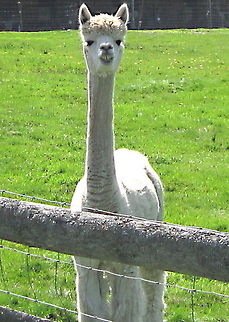
Naming
The relationship between alpacas and vicuñas was disputed for many years. In the 18th and 19th centuries, the four South American lamoid species were assigned scientific names. At that time, the alpaca was assumed to be descended from the llama, ignoring similarities in size, fleece and dentition between the alpaca and the vicuña. Classification was complicated by the fact that all four species of South American camelid can interbreed and produce fertile offspring. The advent of DNA technology made a more accurate classification possible.In 2001, the alpaca genus classification changed from ''Lama pacos'' to ''Vicugna pacos'', following the presentation of a paper on work by Dr. Jane Wheeler et al. on alpaca DNA to the Royal Society showing the alpaca is descended from the vicuña, not the guanaco.
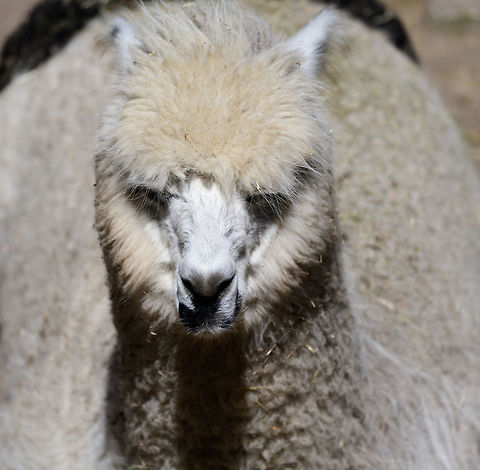
Behavior
Alpacas are social herd animals that live in family groups consisting of a territorial alpha male, females and their young. Alpacas warn the herd about intruders by making sharp, noisy inhalations that sound like a high-pitched bray. The herd may attack smaller predators with their front feet, and can spit and kick.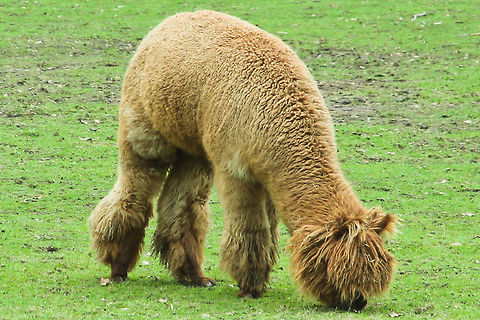
Reproduction
Females are induced ovulators; the act of mating and the presence of semen causes them to ovulate. Females usually conceive after just one breeding, but occasionally do have troubles conceiving. Artificial insemination is technically difficult, but it can be accomplished. Alpacas conceived from artificial insemination are not registerable with the Alpaca Registry.A male is usually ready to mate for the first time between two and three years of age. A female alpaca may fully mature between 10 and 24 months. It is not advisable to allow a young female to be bred until she is mature, and has reached two-thirds of her mature weight. Over-breeding a young female before conception is possible is a common cause of uterine infections. As the age of maturation varies greatly between individuals, it is usually recommended that novice breeders wait until females are 18 months of age or older before initiating breeding.
The gestation period is, on average, 11.5 months, and usually results in a single offspring, or ''cria''. Twins are rare, occurring about once per 1000 deliveries. Cria are generally between 15 and 19 pounds, and are standing 30 to 90 minutes after birth. After a female gives birth, she is generally receptive to breeding again after about two weeks. Crias may be weaned through human intervention at about six months old and 60 pounds, but many breeders prefer to allow the female to decide when to wean her offspring; they can be weaned earlier or later depending on their size and emotional maturity.
Alpacas can live for up to 20 years.
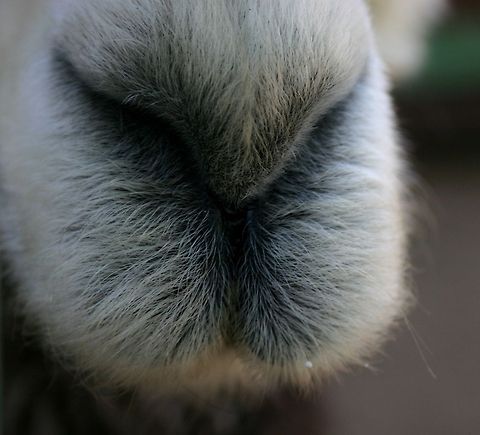
Food
Alpacas require much less food than most animals of their size. They generally eat hay or grasses, but can eat some other plants , and will normally try to chew on almost anything . Most alpaca ranchers rotate their feeding grounds so the grass can regrow and fecal parasites may die before reusing the area.Alpacas can eat natural unfertilized grass; however, ranchers can also supplement grass with low-protein grass hay. To provide selenium and other necessary vitamins, ranchers will feed their domestic alpacas a daily dose of grain. Free-range alpacas may obtain the necessary vitamins in their native grazing ranges.
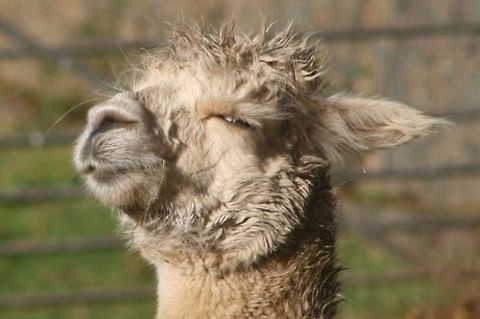
Evolution
The relationship between alpacas and vicuñas was disputed for many years. In the 18th and 19th centuries, the four South American lamoid species were assigned scientific names. At that time, the alpaca was assumed to be descended from the llama, ignoring similarities in size, fleece and dentition between the alpaca and the vicuña. Classification was complicated by the fact that all four species of South American camelid can interbreed and produce fertile offspring. The advent of DNA technology made a more accurate classification possible.In 2001, the alpaca genus classification changed from ''Lama pacos'' to ''Vicugna pacos'', following the presentation of a paper on work by Dr. Jane Wheeler et al. on alpaca DNA to the Royal Society showing the alpaca is descended from the vicuña, not the guanaco.
References:
Some text fragments are auto parsed from Wikipedia.